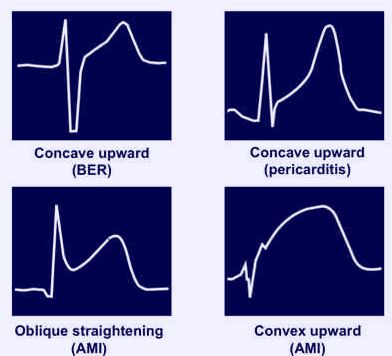Synonyms: Acute pericarditis, Viral pericarditis, Infectious pericarditis Definition: Diffuse inflammation of the pericardial lining surrounding the heart and characterized by sharp pleuritic, retrosternal chest pain worsened with recumbency and relieved by leaning forwards. Causes of Pericarditis: a. Infectious: Viral: Coxsackievirus, Echovirus, Ebstein-Barr virus, Influenza, HIV, Mumps virus Bacterial: Staphylococcus, Hemophilus,…
Tag: Cardiovascular system

A Case of Rheumatic Fever
A 12 year old female came with complaints of multiple joint pain for 10 days which started in the left knee and resolved within 3 days, then started on the bilateral ankles which also resolved in 3 to 4 days and started on the right knee. She currently complains of…
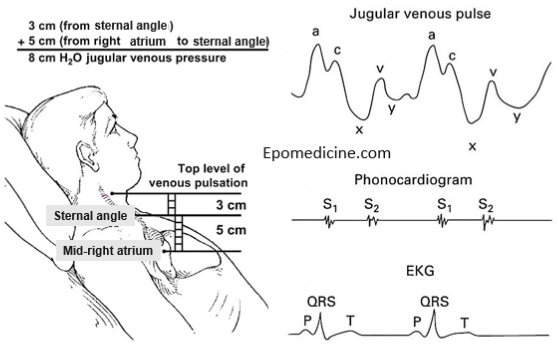
Jugular Venous Pulse and Pressure (JVP) Examination
Definition of Jugular venous Pulse and Pressure Jugular venous pulse is defined as the oscillating top of vertical column of blood in the right Internal Jugular Vein (IJV) that reflects the pressure changes in the right atrium in cardiac cycle. Jugular venous pressure (JVP) is the vertical height of oscillating…

Pallor
Synonyms: Paleness Definition of Pallor Pallor is the paleness of skin and mucous membranes, due to the reduced amount of oxyhemoglobin or decreased peripheral perfusion. Sites to look for pallor Lower palpebral conjunctiva Tip and dorsum of the tongue Soft palate Nail beds Palmar or plantar creases General body skin…
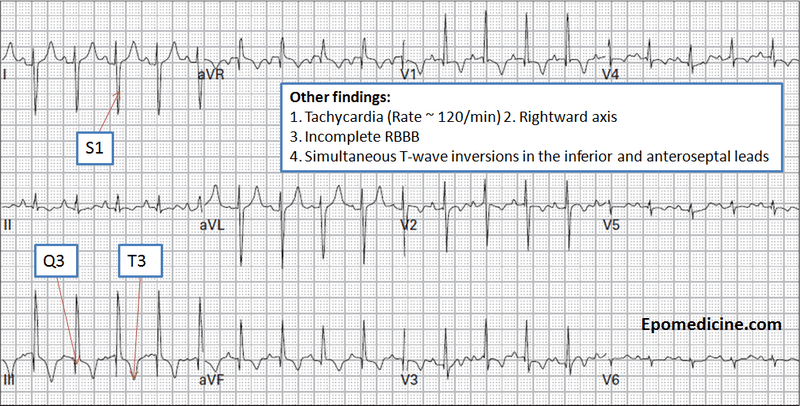
ECG changes in Pulmonary embolism
Synonyms: Pulmonary artery embolism, Pulmonary embolus, PE Definition: A pulmonary embolus (PE) is a blood clot that embolizes to the lungs. When a clot from peripheral veins, the right atrium or the right ventricle travels into the pulmonary circuit, it effectively blocks forward blood through a portion of the lung…
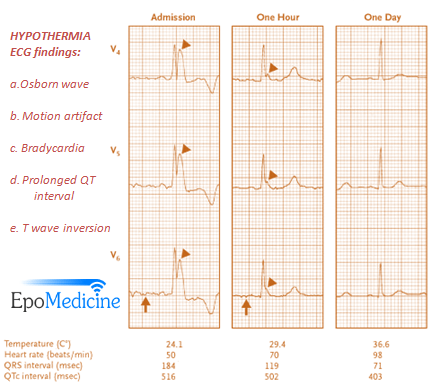
ECG changes in Hypothermia
Synonyms: Accidental hypothermia, Neurotensin-induced hypothermia, Endogenous cryogen-induced hypothermia, Hypoxia-induced hypothermia, Primary hypothermia, Secondary hypothermia Definition: The normal body temperature is around 37 c or 98.6 F. Hypothermia is defined as the lowering of core body temperature below 35°C or 95°F. Classification (Grading): Mild: 32°C to 35°C (90°F to 95°F) Moderate: 28°C…
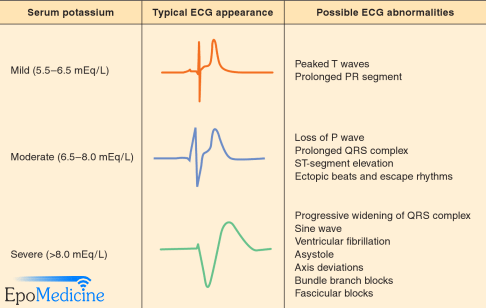
ECG changes in Hyperkalemia
Synonym: Hyperpotassemia Definition: Serum potassium (K+) > 5 mEq/l Electrophysiologic basis of ECG changes: In patients with mild hyperkalemia, potassium conductance (IKr) through potassium channels is increased, which tend to shorten the AP duration and on the ECG causing tall tented T waves. With severe hyperkalemia, effect on RMP becomes…
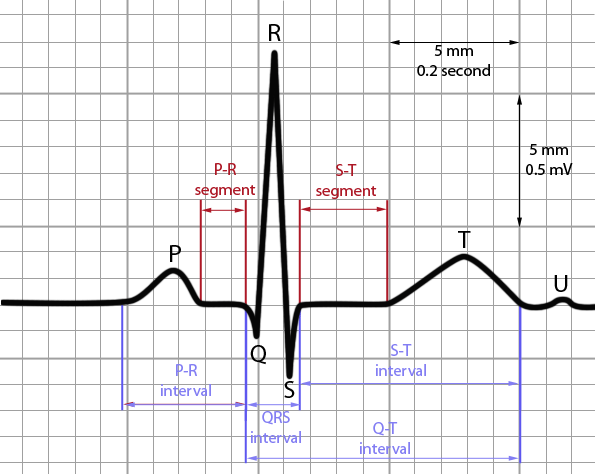
Basics of ECG- Interpretation of waves and intervals
A normal ECG is electrical representation of a normal heart beat or sinus rhythm. The cardiac action potential causing deporalization and repolarization of various cardiac tissues gives a pattern of rhythic change is Electrocardiograph which can be used to diagnose different diseases of the CVS. Normal Rate The beats…
